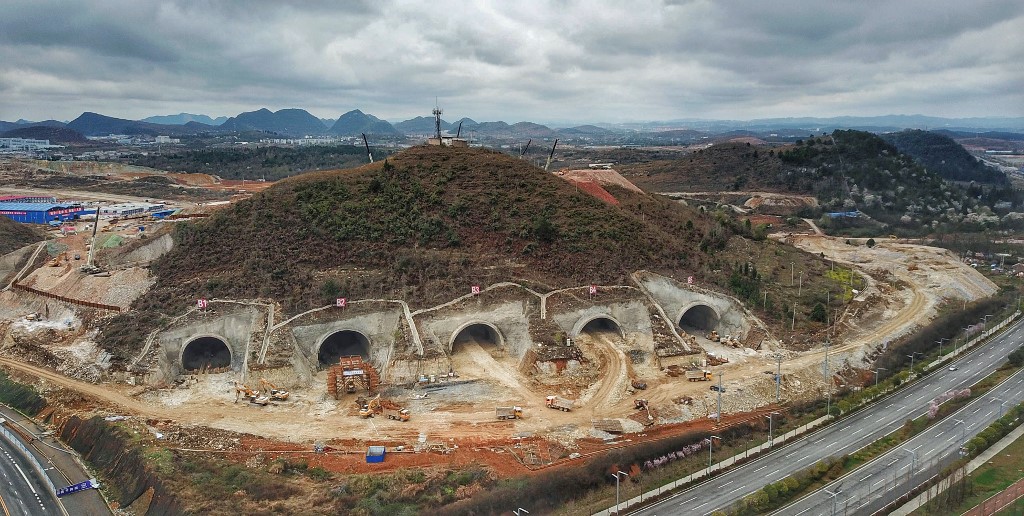Quanchao Technology, a Chinese tech news-site, released photos of a hollowed-out mountain that Huawei has turned into a super secure data centre, which it compared to Microsoft’s underwater data centres sunk on the sea floor.
According to the site, Huawei has hollowed out hills or mountains – more than one – for its servers, while Microsoft has placed some servers in at least two locations deep under the sea.
That raises questions on why this is being done and what the benefits they hope to achieve by doing this – as well as whose method is more effective. One reason is the need to keep its computers cool, and the costs to do this are high.
As the digital age advances, many technology companies have their own server complexes. With increasing need for data to be processed, this has also caused server farms to be overloaded, with heat dissipation needs increasing. It has become a headache for all companies.
In 2014, Microsoft conducted an experiment off the California coast of the United States, in which nearly 300 computer servers were placed in a 17-tonne steel airtight cabin, and lowered to the seabed.
More than 100 kinds of sensors were installed in the cabin, mainly to detect the airtight pressure as the servers are underwater, and to be able to detect whether there is leakage, component damage or interference, such as by submarines.
Why did Microsoft do this? In our normal understanding, the most dangerous element for electronic equipment is water. But a high-speed server can heat up critically, and there are hundreds of servers in one farm, so temperatures can become dangerous. Heat dissipation needs can cripple server farms.
Over the years, the cost of server cooling by various enterprises has become an astronomical figure. The electricity bill for an entire data centre averages about 20% of total electricity costs, and 41% of that goes on cooling.
So companies are constantly looking for cost-saving heat dissipation methods.
Microsoft’s “water cooling” move was undoubtedly a smart idea, to utilise the low temperature of the upper seabed to achieve ‘cool data.’
After confirming the feasibility of the underwater data center concept, a second experiment was launched in the Orkney Islands in Scotland in June 2019.
This time the appearance of the data centre was designed to look like a submarine up to 12 metres long. Compared with the previous version, it was able to accommodate more than 864 servers.
The second experiment was mainly conducted to verify the economic benefits and sustainability of an “underwater server”.
Facebook Centre
Facebook built a huge data centre in Lulea, 900km north of Stockholm, on the edge of the Arctic Circle.
It picked the northern Swedish city partly because of the cold climate – crucial for keeping its servers cool – and access to renewable energy from nearby hydropower facilities. It was opened in 2013.
Where does the communications giant Huawei hide its data?
The world’s largest data centre is located in Gui’an New District in Guizhou, in southwest China. The data centres of Huawei, Apple, Tencent and other companies are located in a mountain. Even China’s national big data centre is located here.
The most famous among them is the Huawei Qixinghu Data Centre, which has an area of more than 400,000 square metres. A large mountain has been hollowed out, and more than 600,000 storage servers are hidden inside, in the remote mountain province, which is also home to Maotai (liquor) and known for its Yeti sightings.
Why did Huawei choose to build a data centre in Guizhou? And what are the benefits of hollowing out an entire mountain?
Gui’an New District in Guizhou has special geographical features. There are many caves in its mountains, so it is relatively easy to hollow out an entire mountain in this area.
And temperatures are much lower than those outside. Even in summer, the temperature can be maintained at about 25C degrees.
The geology of this place is also relatively stable. There are few geological risks such as earthquakes and mudslides, which guarantees the stability of putting data centres there.
Guizhou is also rich in water resources and has surplus electricity. This ensures that a data centre has enough power, as well as the advantage of lower electricity prices, which can reduce the operating cost to a certain extent.
Although it seems that the heat dissipation method used by Microsoft is more advanced, the “underwater server” method is currently still in the experimental stage, and there is no guarantee that it will be used on a large scale in the future. Huawei’s heat dissipation method is obviously more mature, as it uses natural heat dissipation.
Data Research Institute
In June 2019, China announced that its National Bureau of Statistics would set up a big data research institute near Hangzhou in eastern Zhejiang province with the United Nations Department of Economic and Social Affairs.
Hangzhou is the home of Alibaba, China’s biggest e-commerce company. The centre is planned to strengthen statistical capacity in China and other developing countries to participate in global data innovation. It would reportedly include a geospatial centre that would utilise China’s surveillance satellites for detailed mapping of topography and infrastructure around the world.
Arrangements for this are being finalised, but the move has stirred some concern in the US, with claims that Beijing is using the UN “to expand its surveillance reach”.
However, China says the aim is simply to enhance the UN’s data-driven projects, with information integrated into the UN’s master plan for global development, Agenda 2030, which features 17 sustainable development goals, such as ending poverty.
• Chris Gill and Jim Pollard
ALSO SEE:
China’s industrial internet big data centre underway
Tencent to sink 500 bn yuan into new infrastructure
























